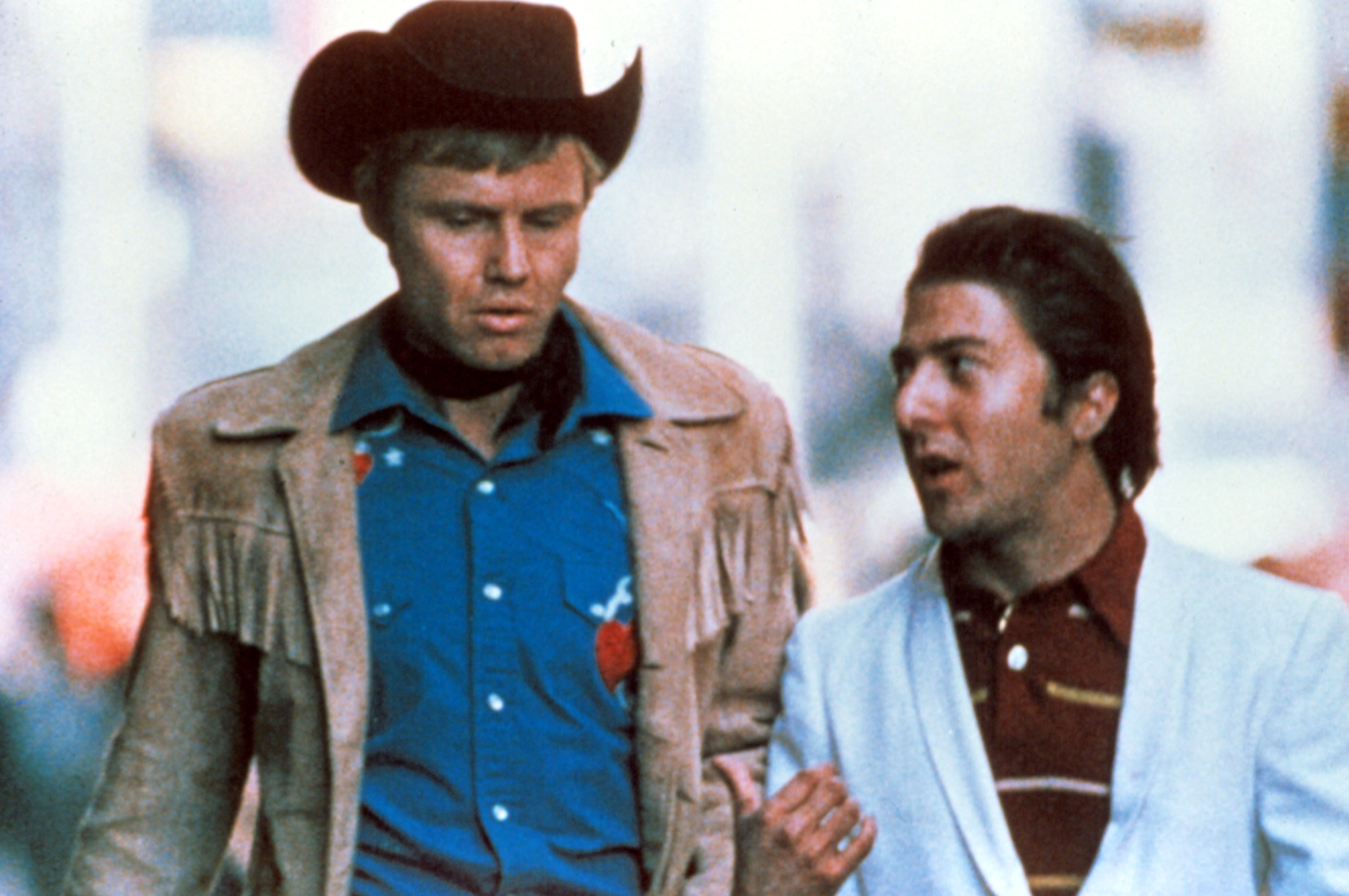Editor’s note: This review was originally published at the 2022 Venice Film Festival. Zeitgeist Films and Kino Lorber releases the film in select theaters on Friday, June 23.
Perhaps the most explicit and emotionally intense film of the New Hollywood era — and yet in its “Odd Couple” theme and wistful sensibility a profoundly Old Hollywood film, too — “Midnight Cowboy” remains littered with contradictions. Gay and tender, its representation of sex is vile. It’s nostalgic and hopeless; a celebration of the counter-culture and, seemingly, an indictment of its decadence. All that makes Nancy Buirski’s new documentary about its production and legacy more interesting.
Not that “Midnight Cowboy” isn’t already fruitful subject matter. James Leo Herlihy’s radical 1965 novel was picked up by British kitchen sink filmmaker John Schlesinger, who related to its themes of repressed homosexuality, loneliness, victimhood and how our identities are, in truth, whatever we want them to be. Casting Jon Voight as the title gigolo Joe Buck, despite his previous work having been so-so, is the real masterstroke. One of those eager young actors who knew exactly what sort of movies he would succeed in, not just the type he wanted to make, Voight was a step ahead of Dustin Hoffman, who accepted “The Graduate” reluctantly, and became a movie star.
But Voight’s evident nous offscreen is entirely concealed in his performance as Buck, who plays peek-a-boo with a little girl on the bus into New York City, and never really looks happier after that. Watching him waltz down Madison Avenue in a sea of people, cowboy hat worn proudly, is still quite the image. That he genuinely sticks up above all of them is even better, and was such an asset to Schlesinger. That’s Joe Buck in a nutshell: a little too long to fit the box society wants to put him in. He’s the only one who considers a corpse in the middle of the street, one of many tokens of New York’s legendary urban decline in the late-1960s. Two years beforehand, Zero Mostel’s Max Bialystok had one solution to the city’s rut, and its surplus of rich old white ladies willing to pay for sex. Buck’s is even bolder.
Himself a gay Jew who described his posh British boarding school experience as a “pogrom,” director Schlesinger knew what it was like not to fit in. (He adds in an archival interview: “The British were nothing if not antisemitic.”) Yet having just made “Far from the Madding Crowd” to mild establishment fanfare and lukewarm reactions from the people who mattered, Schlesinger probably felt more like Buck than ever before. A true outsider, he was willing to go against Hollywood’s historic reverence toward Old World New York. Schlesinger’s streets are decidedly mean, a good few years before anyone else depicted them that way. That was hardly intentional either, author and scuzzy New York scholar Lucy Sante explains. She tells Buirski that “Midnight Cowboy” brought “a carnival of debauchery to the American public” — but that Schlesinger’s on-the-money vision of a city entirely new to him came “by accident.” “It expressed its time by being of its time,” she adds. “No one knows their time.”
“Midnight Cowboy” fooled me. Hoffman’s Ratso is a famously well-observed illustration of his dirt-ridden city and the enduring spirit of New Yorkers trying to make their lives a touch better. (Hoffman isn’t interviewed for Buirski’s documentary for reasons that aren’t clear, but which may have something to do with a smattering of sexual harassment allegations since 2017.)
And if Schlesinger didn’t know his time till later, there were certainly a few factors in his favor. Postwar acting techniques first tested by Marlon Brando and James Dean had been perfected by Voight and Hoffman et al. New York City had recently opened the floodgates to filming on-location. The use of color had been mastered, too, by Polish cinematographer Adam Holender and his contemporaries. Screenwriter Waldo Salt didn’t have to worry about the blacklist anymore, either, after more than a decade in the dark. And the censors were, well, less censorious. (Buirski never gets to the bottom of why “Midnight Cowboy” gets an X-rating. Seemingly no one knows, though Schlesinger’s nephew-cum-occasional narrator, Ian Buruma, suspects it was under pressure from studio heads who wanted to steer clear of any trouble resulting from teenagers seeing the movie.)
All this serves as a pretty good explanation for why “Midnight Cowboy” became such a phenomenon, and why we’re still so fixated by it. That point is evidenced by Buirski’s prompt to make her film: last year’s “Shooting Midnight Cowboy: Art, Sex, Loneliness, Liberation, and the Making of a Dark Classic” by Glenn Frankel. Still, “Desperate Souls” retreads a good deal of Vietnam and cultural revolution context which have become accepted norms. It also treats Martin Scorsese’s 1970s films as proof of the legacy of “Midnight Cowboy”, as if it doesn’t stand up in its own right. Letting the movie do the talking often works best. As one of Buirski’s talking heads points out when asked what makes “Midnight Cowboy” endure: “It’s not all that’s going on in the culture. Part of it is that it’s good.”
Grade: B+
“Desperate Souls, Dark City and the Legend of Midnight Cowboy” premiered at the 2022 Venice Film Festival.





